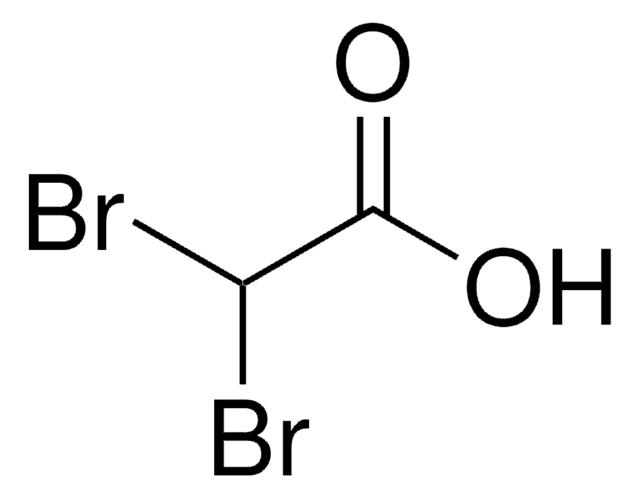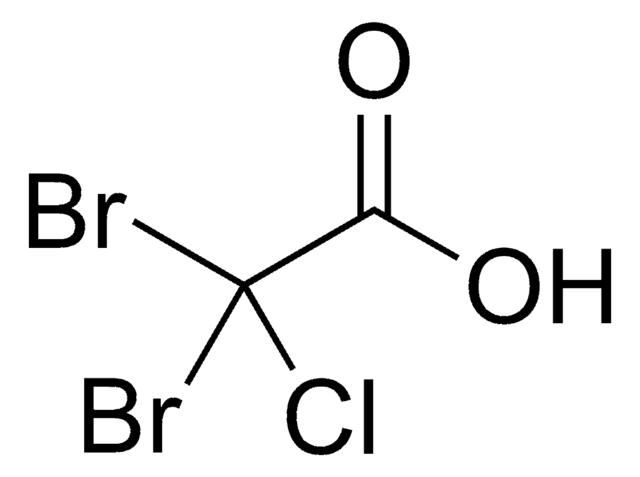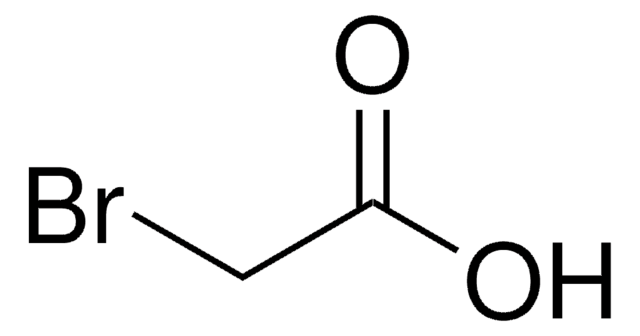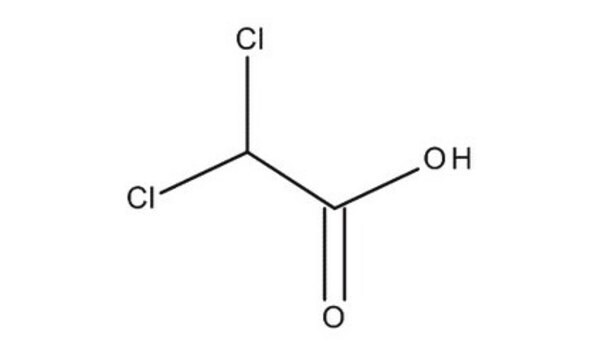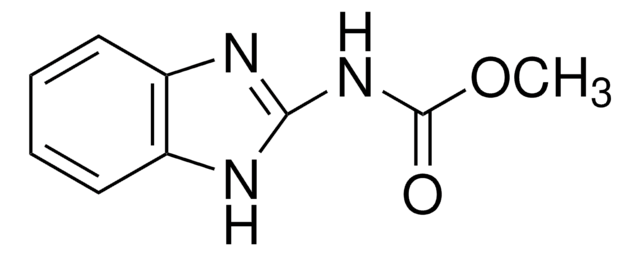Kluczowe dokumenty
242357
Dibromoacetic acid
97%
Synonim(y):
2,2-Dibromoacetic acid, DBAA
About This Item
Polecane produkty
Poziom jakości
Próba
97%
Formularz
solid
bp
128-130 °C/16 mmHg (lit.)
mp
32-38 °C (lit.)
gęstość
2.382 g/mL at 25 °C (lit.)
grupa funkcyjna
bromo
carboxylic acid
ciąg SMILES
OC(=O)C(Br)Br
InChI
1S/C2H2Br2O2/c3-1(4)2(5)6/h1H,(H,5,6)
Klucz InChI
SIEILFNCEFEENQ-UHFFFAOYSA-N
Szukasz podobnych produktów? Odwiedź Przewodnik dotyczący porównywania produktów
Powiązane kategorie
Zastosowanie
- Forthe stereoselective synthesis of (E)-α, β-unsaturated carboxylic acidsby samarium diiodide (SmI2) catalyzed reaction with aldehydes.
- Tosynthesize sodium bis(2-pyridylthio)acetate ligand by reacting with 2-mercaptopyridinein the presence of NaOH.
Inne uwagi
Hasło ostrzegawcze
Danger
Zwroty wskazujące rodzaj zagrożenia
Zwroty wskazujące środki ostrożności
Klasyfikacja zagrożeń
Acute Tox. 4 Dermal - Acute Tox. 4 Inhalation - Acute Tox. 4 Oral - Aquatic Chronic 3 - Eye Dam. 1 - Skin Corr. 1B
Kod klasy składowania
8A - Combustible corrosive hazardous materials
Klasa zagrożenia wodnego (WGK)
WGK 3
Temperatura zapłonu (°F)
235.4 °F - closed cup
Temperatura zapłonu (°C)
113 °C - closed cup
Środki ochrony indywidualnej
Eyeshields, Faceshields, Gloves, type P3 (EN 143) respirator cartridges
Wybierz jedną z najnowszych wersji:
Masz już ten produkt?
Dokumenty związane z niedawno zakupionymi produktami zostały zamieszczone w Bibliotece dokumentów.
Klienci oglądali również te produkty
Nasz zespół naukowców ma doświadczenie we wszystkich obszarach badań, w tym w naukach przyrodniczych, materiałoznawstwie, syntezie chemicznej, chromatografii, analityce i wielu innych dziedzinach.
Skontaktuj się z zespołem ds. pomocy technicznej